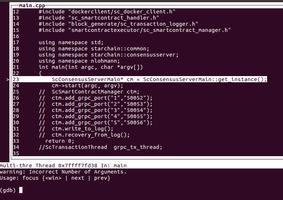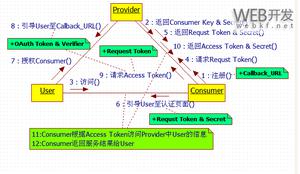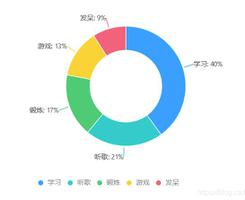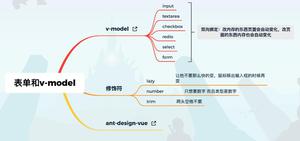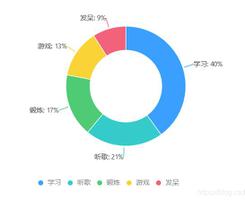PythonHOWTO使用urllib包获取网络资源

- 作者
Michael Foord
注解
这份 HOWTO 文档的早期版本有一份法语的译文,可在 urllib2 - Le Manuel manquant 处查阅。
概述¶
urllib.request 是一个用于获取 URL (统一资源定位地址)的 Python 模块。它以 urlopen 函数的形式提供了一个非常简单的接口。该接口能够使用不同的协议获取 URL。同时它也提供了一个略微复杂的接口来处理常见情形——如:基本验证、cookies、代理等等。这些功能是通过叫做 handlers 和 opener 的对象来提供的。
urllib.request 支持多种 "URL 网址方案" (通过 URL中 ":" 之前的字符串加以区分——如 URL 地址 "ftp://python.org/"`中的``"ftp"`) ,使用与之相关的网络协议(如:FTP、 HTTP)来获取 URL 资源。本指南重点关注最常用的情形—— HTTP。
对于简单场景而言, urlopen 用起来十分容易。但只要在打开 HTTP URL 时遇到错误或非常情况,就需要对超文本传输协议有所了解才行。最全面、最权威的 HTTP 参考是 RFC 2616 。那是一份技术文档,并没有追求可读性。本 文旨在说明 urllib 的用法,为了便于阅读也附带了足够详细的 HTTP 信息。本文并不是为了替代 urllib.request 文档,只是其补充说明而已。
提取URL¶
下面是使用 urllib.request 最简单的方式:
importurllib.requestwithurllib.request.urlopen('http://python.org/')asresponse:
html=response.read()
如果你想通过 URL 获取资源并保存某个临时的地方,你可以通过 shutil.copyfileobj() 和 tempfile.NamedTemporaryFile() 函数:
importshutilimporttempfile
importurllib.request
withurllib.request.urlopen('http://python.org/')asresponse:
withtempfile.NamedTemporaryFile(delete=False)astmp_file:
shutil.copyfileobj(response,tmp_file)
withopen(tmp_file.name)ashtml:
pass
urllib很易于使用(注意URL不仅仅可以以'http:'开头,也可以是'ftp:','file:'等)。但是,这篇教程的目的是介绍更加复杂的用法,大多数是以HTTP举例。
HTTP基于请求和回应——客户端像服务器请求,服务器回应。urllib.request将你的HTTP请求保存为一个``Request``对象。在最简单的情况下,一个Request对象里包含你所请求的特定URL。以当前的Request对象作为参数调用``urlopen``返回服务器对你正在请求的URL的回应。回应是个文件类对象,所以你可以调用如``.read()``等命令。
importurllib.requestreq=urllib.request.Request('http://www.voidspace.org.uk')
withurllib.request.urlopen(req)asresponse:
the_page=response.read()
注意urllib.request中的Request接口也支持处理所有的协议。比如,你可以像这样做一个 FTP 请求:
req=urllib.request.Request('ftp://example.com/')在 HTTP 的情况下,Request 对象允许你做两件额外的事:一,你可以向服务器发送数据。二,你可以向服务器发送额外的信息(“元数据”): 关于 数据或请求本身的。信息将以“HTTP头”的方式发过去。让我们一个个看过去。
数据¶
有时候你想要给一个 URL 发送数据(通常这个URL指向一个CGI(通用网关接口)脚本或者其他 web 应用)。 对于 HTTP,这通常使用一个 POST 请求来完成。 比如在浏览器上提交一个 HTML 表单。 但并不是所有的 POST 都来自表单:你能使用一个 POST 来传输任何数据到你自己的应用上。 在使用常见的 HTML 表单的情况下,数据需要以标准的方式编码,然后再作为 data 参数传给 Request 对象。 编码需要使用一个来自 urllib.parse 库的函数。
importurllib.parseimporturllib.request
url='http://www.someserver.com/cgi-bin/register.cgi'
values={'name':'Michael Foord',
'location':'Northampton',
'language':'Python'}
data=urllib.parse.urlencode(values)
data=data.encode('ascii')# data should be bytes
req=urllib.request.Request(url,data)
withurllib.request.urlopen(req)asresponse:
the_page=response.read()
请注意,有时还需要采用其他编码,比如由 HTML 表单上传文件——更多细节请参见 HTML 规范,提交表单 。
如果不传递 data 参数,urllib 将采用 GET 请求。GET 和 POST 请求有一点不同,POST 请求往往具有“副作用”,他们会以某种方式改变系统的状态。例如,从网站下一个订单,购买一大堆罐装垃圾并运送到家。 尽管 HTTP 标准明确指出 POST 总是 要导致副作用,而 GET 请求 从来不会 导致副作用。但没有什么办法能阻止 GET 和 POST 请求的副作用。数据也可以在 HTTP GET 请求中传递,只要把数据编码到 URL 中即可。
具体操作如下:
>>> importurllib.request>>> importurllib.parse
>>> data={}
>>> data['name']='Somebody Here'
>>> data['location']='Northampton'
>>> data['language']='Python'
>>> url_values=urllib.parse.urlencode(data)
>>> print(url_values)# The order may differ from below.
name=Somebody+Here&language=Python&location=Northampton
>>> url='http://www.example.com/example.cgi'
>>> full_url=url+'?'+url_values
>>> data=urllib.request.urlopen(full_url)
请注意,完整的 URL 是通过在其中添加 ? 创建的,后面跟着经过编码的数据。
HTTP 头部信息¶
下面介绍一个具体的 HTTP 头部信息,以此说明如何在 HTTP 请求加入头部信息。
有些网站 1 不愿被程序浏览到,或者要向不同的浏览器发送不同版本 2 的网页。默认情况下,urllib 将自身标识为“Python-urllib/xy”(其中 x 、 y 是 Python 版本的主、次版本号,例如 Python-urllib/2.5),这可能会让网站不知所措,或者干脆就使其无法正常工作。浏览器是通过头部信息 User-Agent 3 来标识自己的。在创建 Request 对象时,可以传入字典形式的头部信息。以下示例将生成与之前相同的请求,只是将自身标识为某个版本的 Internet Explorer 4 :
importurllib.parseimporturllib.request
url='http://www.someserver.com/cgi-bin/register.cgi'
user_agent='Mozilla/5.0 (Windows NT 6.1; Win64; x64)'
values={'name':'Michael Foord',
'location':'Northampton',
'language':'Python'}
headers={'User-Agent':user_agent}
data=urllib.parse.urlencode(values)
data=data.encode('ascii')
req=urllib.request.Request(url,data,headers)
withurllib.request.urlopen(req)asresponse:
the_page=response.read()
响应对象也有两个很有用的方法。请参阅有关 info 和 geturl 部分,了解出现问题时会发生什么。
处理异常¶
如果 urlopen 无法处理响应信息,就会触发 URLError 。尽管与通常的 Python API 一样,也可能触发 ValueError 、 TypeError 等内置异常。
HTTPError 是 URLError 的子类,当 URL 是 HTTP 的情况时将会触发。
异常类从 urllib.error 模块中导出。
URLError¶
通常,引发 URLError 的原因是没有网络连接(或者没有到指定服务器的路由),或者指定的服务器不存在。该情况下,将会引发该异常,并带有一个 'reason' 属性,该属性是一个包含错误代码和文本错误信息的元组。
例如
>>> req=urllib.request.Request('http://www.pretend_server.org')>>> try:urllib.request.urlopen(req)
... excepturllib.error.URLErrorase:
... print(e.reason)
...
(4, 'getaddrinfo failed')
HTTPError¶
从服务器返回的每个 HTTP 响应都包含一个数字的 “状态码”。有时该状态码表明服务器无法完成该请求。默认的处理器(函数?)将会为你处理这其中的一些响应。(例如,如果响应包含了 "redirection",将会要求客户端去向另外的 URL 获取文档,urllib 将会为你处理该情形)。对于那些它无法处理的(状态代码),urlopen 将会引发一个 HTTPError 。典型的错误包括:‘404’(页面无法找到)、‘403’(请求遭拒绝)和 ’401‘ (需要身份验证)。
全部的 HTTP 错误码请参阅 RFC 2616 。
HTTPError 实例将包含一个整数型的“code”属性,对应于服务器发来的错误。
错误代码¶
由于默认处理函数会自行处理重定向(300 以内的错误码),而且 100--299 的状态码表示成功,因此通常只会出现 400--599 的错误码。
http.server.BaseHTTPRequestHandler.responses 是很有用的响应码字典,其中给出了 RFC 2616 用到的所有响应代码。为方便起见,下面将此字典转载如下:
# Table mapping response codes to messages; entries have the# form {code: (shortmessage, longmessage)}.
responses={
100:('Continue','Request received, please continue'),
101:('Switching Protocols',
'Switching to new protocol; obey Upgrade header'),
200:('OK','Request fulfilled, document follows'),
201:('Created','Document created, URL follows'),
202:('Accepted',
'Request accepted, processing continues off-line'),
203:('Non-Authoritative Information','Request fulfilled from cache'),
204:('No Content','Request fulfilled, nothing follows'),
205:('Reset Content','Clear input form for further input.'),
206:('Partial Content','Partial content follows.'),
300:('Multiple Choices',
'Object has several resources -- see URI list'),
301:('Moved Permanently','Object moved permanently -- see URI list'),
302:('Found','Object moved temporarily -- see URI list'),
303:('See Other','Object moved -- see Method and URL list'),
304:('Not Modified',
'Document has not changed since given time'),
305:('Use Proxy',
'You must use proxy specified in Location to access this '
'resource.'),
307:('Temporary Redirect',
'Object moved temporarily -- see URI list'),
400:('Bad Request',
'Bad request syntax or unsupported method'),
401:('Unauthorized',
'No permission -- see authorization schemes'),
402:('Payment Required',
'No payment -- see charging schemes'),
403:('Forbidden',
'Request forbidden -- authorization will not help'),
404:('Not Found','Nothing matches the given URI'),
405:('Method Not Allowed',
'Specified method is invalid for this server.'),
406:('Not Acceptable','URI not available in preferred format.'),
407:('Proxy Authentication Required','You must authenticate with '
'this proxy before proceeding.'),
408:('Request Timeout','Request timed out; try again later.'),
409:('Conflict','Request conflict.'),
410:('Gone',
'URI no longer exists and has been permanently removed.'),
411:('Length Required','Client must specify Content-Length.'),
412:('Precondition Failed','Precondition in headers is false.'),
413:('Request Entity Too Large','Entity is too large.'),
414:('Request-URI Too Long','URI is too long.'),
415:('Unsupported Media Type','Entity body in unsupported format.'),
416:('Requested Range Not Satisfiable',
'Cannot satisfy request range.'),
417:('Expectation Failed',
'Expect condition could not be satisfied.'),
500:('Internal Server Error','Server got itself in trouble'),
501:('Not Implemented',
'Server does not support this operation'),
502:('Bad Gateway','Invalid responses from another server/proxy.'),
503:('Service Unavailable',
'The server cannot process the request due to a high load'),
504:('Gateway Timeout',
'The gateway server did not receive a timely response'),
505:('HTTP Version Not Supported','Cannot fulfill request.'),
}
当触发错误时,服务器通过返回 HTTP 错误码 和 错误页面进行响应。可以将 HTTPError 实例用作返回页面的响应。这意味着除了 code 属性之外,错误对象还像 urllib.response 模块返回的那样具有 read、geturl 和 info 方法:
>>> req=urllib.request.Request('http://www.python.org/fish.html')>>> try:
... urllib.request.urlopen(req)
... excepturllib.error.HTTPErrorase:
... print(e.code)
... print(e.read())
...
404
b'<!DOCTYPE html PUBLIC "-//W3C//DTD XHTML 1.0 Transitional//EN"
"http://www.w3.org/TR/xhtml1/DTD/xhtml1-transitional.dtd">\n\n\n<html
...
<title>Page Not Found</title>\n
...
包装起来¶
若要准备处理 HTTPError 或URLError ,有两种简单的方案。推荐使用第二种方案。
数字1¶
fromurllib.requestimportRequest,urlopenfromurllib.errorimportURLError,HTTPError
req=Request(someurl)
try:
response=urlopen(req)
exceptHTTPErrorase:
print('The server couldn\'t fulfill the request.')
print('Error code: ',e.code)
exceptURLErrorase:
print('We failed to reach a server.')
print('Reason: ',e.reason)
else:
# everything is fine
注解
exceptHTTPError必须 首先处理,否则 exceptURLError 将会 同时 捕获 HTTPError 。
第二种方案¶
fromurllib.requestimportRequest,urlopenfromurllib.errorimportURLError
req=Request(someurl)
try:
response=urlopen(req)
exceptURLErrorase:
ifhasattr(e,'reason'):
print('We failed to reach a server.')
print('Reason: ',e.reason)
elifhasattr(e,'code'):
print('The server couldn\'t fulfill the request.')
print('Error code: ',e.code)
else:
# everything is fine
info and geturl¶
由 urlopen (或者 HTTPError 实例)所返回的响应包含两个有用的方法: info() 和 geturl(),该响应由模块 urllib.response 定义。
geturl - 返回所获取页面的真实 URL。该方法很有用,因为 urlopen (或者所使用的 opener 对象)可能回包括一次重定向。所获取页面的 URL 未必就是所请求的 URL 。
info - 该方法返回一个类似字典的对象,描述了所获取的页面,特别是由服务器送出的头部信息(headers) 。目前它是一个 http.client.HTTPMessage 实例。
典型的 HTTP 头部信息包括“Content-length”、“Content-type”等。有关 HTTP 头部信息的清单,包括含义和用途的简要说明,请参阅 HTTP Header 快速参考 。
Opener 和 Handler¶
当获取 URL 时,会用到了一个 opener(一个类名可能经过混淆的 urllib.request.OpenerDirector 的实例)。通常一直会用默认的 opener ——通过 urlopen ——但也可以创建自定义的 opener 。opener 会用到 handler。所有的“繁重工作”都由 handler 完成。每种 handler 知道某种 URL 方案(http、ftp 等)的 URL 的打开方式,或是某方面 URL 的打开方式,例如 HTTP 重定向或 HTTP cookie。
若要用已安装的某个 handler 获取 URL,需要创建一个 opener 对象,例如处理 cookie 的 handler,或对重定向不做处理的 handler。
若要创建 opener,请实例化一个 OpenerDirector ,然后重复调用 .add_handler(some_handler_instance) 。
或者也可以用 build_opener ,这是个用单次调用创建 opener 对象的便捷函数。build_opener 默认会添加几个 handler,不过还提供了一种快速添加和/或覆盖默认 handler 的方法。
可能还需要其他类型的 handler,以便处理代理、身份认证和其他常见但稍微特殊的情况。
install_opener 可用于让 opener 对象成为(全局)默认 opener。这意味着调用 urlopen 时会采用已安装的 opener。
opener 对象带有一个 `open 方法,可供直接调用以获取 url,方式与 urlopen 函数相同。除非是为了调用方便,否则没必要去调用 install_opener 。
基本认证¶
To illustrate creating and installing a handler we will use the
HTTPBasicAuthHandler. For a more detailed discussion of this subject --
including an explanation of how Basic Authentication works - see the Basic
Authentication Tutorial.
如果需要身份认证,服务器会发送一条请求身份认证的头部信息(以及 401 错误代码)。这条信息中指明了身份认证方式和“安全区域(realm)”。格式如下所示:WWW-Authenticate:SCHEMErealm="REALM" 。
例如
WWW-Authenticate: Basic realm="cPanel Users"然后,客户端应重试发起请求,请求数据中的头部信息应包含安全区域对应的用户名和密码。这就是“基本身份认证”。为了简化此过程,可以创建 HTTPBasicAuthHandler 的一个实例及使用它的 opener。
HTTPBasicAuthHandler 用一个名为密码管理器的对象来管理 URL、安全区域与密码、用户名之间的映射关系。如果知道确切的安全区域(来自服务器发送的身份认证头部信息),那就可以用到 HTTPPasswordMgr 。通常人们并不关心安全区域是什么,这时用``HTTPPasswordMgrWithDefaultRealm`` 就很方便,允许为 URL 指定默认的用户名和密码。当没有为某个安全区域提供用户名和密码时,就会用到默认值。下面用 None 作为 add_password 方法的安全区域参数,表明采用默认用户名和密码。
首先需要身份认证的是顶级 URL。比传给 .add_password() 的 URL 级别“更深”的 URL 也会得以匹配:
# create a password managerpassword_mgr=urllib.request.HTTPPasswordMgrWithDefaultRealm()
# Add the username and password.
# If we knew the realm, we could use it instead of None.
top_level_url="http://example.com/foo/"
password_mgr.add_password(None,top_level_url,username,password)
handler=urllib.request.HTTPBasicAuthHandler(password_mgr)
# create "opener" (OpenerDirector instance)
opener=urllib.request.build_opener(handler)
# use the opener to fetch a URL
opener.open(a_url)
# Install the opener.
# Now all calls to urllib.request.urlopen use our opener.
urllib.request.install_opener(opener)
注解
在以上例子中,只向 build_opener 给出了 HTTPBasicAuthHandler 。默认情况下,opener 会有用于处理常见状况的 handler ——ProxyHandler (如果设置代理的话,比如设置了环境变量 http_proxy ),UnknownHandler 、HTTPHandler 、 HTTPDefaultErrorHandler 、 HTTPRedirectHandler 、 FTPHandler 、 FileHandler 、 DataHandler 、 HTTPErrorProcessor 。
top_level_url 其实 要么 是一条完整的 URL(包括 “http:” 部分和主机名及可选的端口号),比如 "http://example.com/" , 要么 是一条“访问权限”(即主机名,及可选的端口号),比如 "example.com" 或 "example.com:8080" (后一个示例包含了端口号)。访问权限 不得 包含“用户信息”部分——比如 "joe:password@example.com" 就不正确。
代理¶
urllib 将自动检测并使用代理设置。 这是通过 ProxyHandler 实现的,当检测到代理设置时,是正常 handler 链中的一部分。通常这是一件好事,但有时也可能会无效 5。 一种方案是配置自己的 ProxyHandler ,不要定义代理。 设置的步骤与 Basic Authentication handler 类似:
>>> proxy_support=urllib.request.ProxyHandler({})>>> opener=urllib.request.build_opener(proxy_support)
>>> urllib.request.install_opener(opener)
注解
目前 urllib.request尚不 支持通过代理抓取 https 链接地址。 但此功能可以通过扩展 urllib.request 来启用,如以下例程所示 6。
注解
如果设置了 REQUEST_METHOD 变量,则会忽略 HTTP_PROXY ;参阅 getproxies() 文档。
套接字与分层¶
Python 获取 Web 资源的能力是分层的。urllib 用到的是 http.client 库,而后者又用到了套接字库。
从 Python 2.3 开始,可以指定套接字等待响应的超时时间。这对必须要读到网页数据的应用程序会很有用。默认情况下,套接字模块 不会超时 并且可以挂起。目前,套接字超时机制未暴露给 http.client 或 urllib.request 层使用。不过可以为所有用到的套接字设置默认的全局超时。
importsocketimporturllib.request
# timeout in seconds
timeout=10
socket.setdefaulttimeout(timeout)
# this call to urllib.request.urlopen now uses the default timeout
# we have set in the socket module
req=urllib.request.Request('http://www.voidspace.org.uk')
response=urllib.request.urlopen(req)
备注¶
这篇文档由 John Lee 审订。
- 1
例如 Google。
- 2
对于网站设计而言,探测不同的浏览器是非常糟糕的做法——更为明智的做法是采用 web 标准构建网站。不幸的是,很多网站依然向不同的浏览器发送不同版本的网页。
- 3
MSIE 6 的 user-agent 信息是 “Mozilla/4.0 (compatible; MSIE 6.0; Windows NT 5.1; SV1; .NET CLR 1.1.4322)”
- 4
有关 HTTP 请求的头部信息,详情请参阅 Quick Reference to HTTP Headers。
- 5
本人必须使用代理才能在工作中访问互联网。如果尝试通过代理获取 localhost URL,将会遭到阻止。IE 设置为代理模式,urllib 就会获取到配置信息。为了用 localhost 服务器测试脚本,我必须阻止 urllib 使用代理。
- 6
urllib 的 SSL 代理 opener(CONNECT 方法): ASPN Cookbook Recipe 。
以上是 PythonHOWTO使用urllib包获取网络资源 的全部内容, 来源链接: utcz.com/z/508072.html


